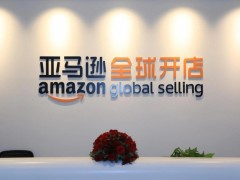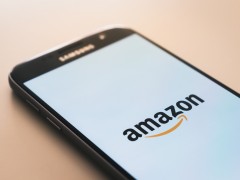How does Amazon Cloud make money?
亚马逊云是通过多种方式实现盈利的,其中一些主要方式包括:
1. 基础设施即服务(IaaS):亚马逊云提供基础设施即服务,允许客户使用其数据中心、服务器和计算资源等基础设施。客户可以根据自己的需求购买和使用这些资源,并按照一定的费率支付使用费用。
2. 平台即服务(PaaS):亚马逊云也提供平台即服务,例如AWS Elastic Beanstalk和AWS Lambda等。这些服务为客户提供了一个开发、运行和管理应用程序的平台,并以使用量收取费用。
3. 软件即服务(SaaS):亚马逊云还提供各种软件即服务产品,例如Amazon WorkSpaces和Amazon Chime等。这些产品向客户提供各种应用程序和工具,以帮助他们更好地管理业务,并按每个用户或每个订阅收取费用。
4. 数据存储和传输:除了基础设施、平台和软件之外,亚马逊云还提供数据存储和传输服务。例如Amazon S3和Amazon Glacier等存储服务以及Amazon CloudFront CDN(内容分发网络)等传输服务,它们向用户收取相关的存储、流量和传输费用。
综上所述,亚马逊云的盈利模式非常多样化,涵盖了基础设施、平台和软件等各个领域,并通过按需计费的方式为客户提供灵活性。
Professional answer
Amazon Cloud makes money in many ways, some of the main ways include:
1. Infrastructure as a Service (IaaS): Amazon Cloud provides infrastructure as a service, allowing customers to use its infrastructure such as data centers, servers and computing resources. Customers can purchase and use these resources according to their needs and pay for the use at a certain rate.
2. Platform as a Service (PaaS): Amazon Cloud also provides platform as a service, such as AWS Elastic Beanstalk and AWS Lambda. These services provide customers with a platform to develop, run and manage applications, and charge fees based on usage.
3. Software as a Service (SaaS): Amazon Cloud also provides various software as a service products, such as Amazon WorkSpaces and Amazon Chime. These products provide customers with various applications and tools to help them better manage their business, and charge fees per user or per subscription.
4. Data storage and transmission: In addition to infrastructure, platform and software, Amazon Cloud also provides data storage and transmission services. For example, storage services such as Amazon S3 and Amazon Glacier, and transmission services such as Amazon CloudFront CDN (content distribution network), charge users for related storage, traffic and transmission fees.
In summary, Amazon Cloud's profit model is very diverse, covering various fields such as infrastructure, platform and software, and providing customers with flexibility through on-demand billing.
1. Seize the long-tail business opportunities: People who know Amazon know that Amazon started out as a book seller, with a collection of 3.1 million books. The long-tail theory challenges the traditional marketing theory that 20% of heavy consumers can buy 80% of products. The low cost of the Internet makes 80% of low-level consumers an important source of profit;
2. Amazon's no-source model: There is no need to stock up, prepare, or ship goods by yourself. Upload goods to foreign websites through the ERP system. Buyers place orders, and sellers collect sources and send them to Amazon's official warehouse. Amazon will take care of everything for you, greatly saving the expenses of logistics, warehousing, and packaging personnel
3. From low-price wholesale to product customization: The market price abroad is much higher than that in China. The goods of domestic low-price wholesalers can be sold at high prices on European sites, and the profit of one order is between 30% and 50%. Sellers understand users' shopping information and shopping preferences based on the site they choose, actively customize products, and expand profits through boutique operations.
Similar Q&A
recommend How to view sales of several months on Amazon?
E-c News Continuously pushing e-commerce knowledge to you








Latest Q&A More
-
Do I need a trademark to open a franchise store on Pinduoduo to sell books?
#Pinduoduo#
-
How to withdraw from a Pinduoduo store
#Pinduoduo#
-
How to withdraw from Pinduoduo merchants
#Pinduoduo#
-
How to pay fees when closing a Pinduoduo store
#Pinduoduo#
-
How to withdraw from Pinduoduo
#Pinduoduo#
-
Which store on Pinduoduo is authentic?
#Pinduoduo#
-
Which stores on Pinduoduo can buy genuine products?
#Pinduoduo#
-
How to check the store under Pinduoduo
#Pinduoduo#
-
How to receive Pinduoduo online game products
#Pinduoduo#
-
How to sell the electronic version on Pinduoduo
#Pinduoduo#
E-c News 2025-07-14 03:05:16

- African netizens use China Africa cross-border e-commerce platform for online shopping
- how is the new seller of cross-border e-commerce doing?
- how can cross-border e-commerce Amazon sell on Amazon platform without goods?
- Amazon store opening process and cost analysis!
- Amazon plans to expand its pharmacy business on a large scale and will add same day delivery service

